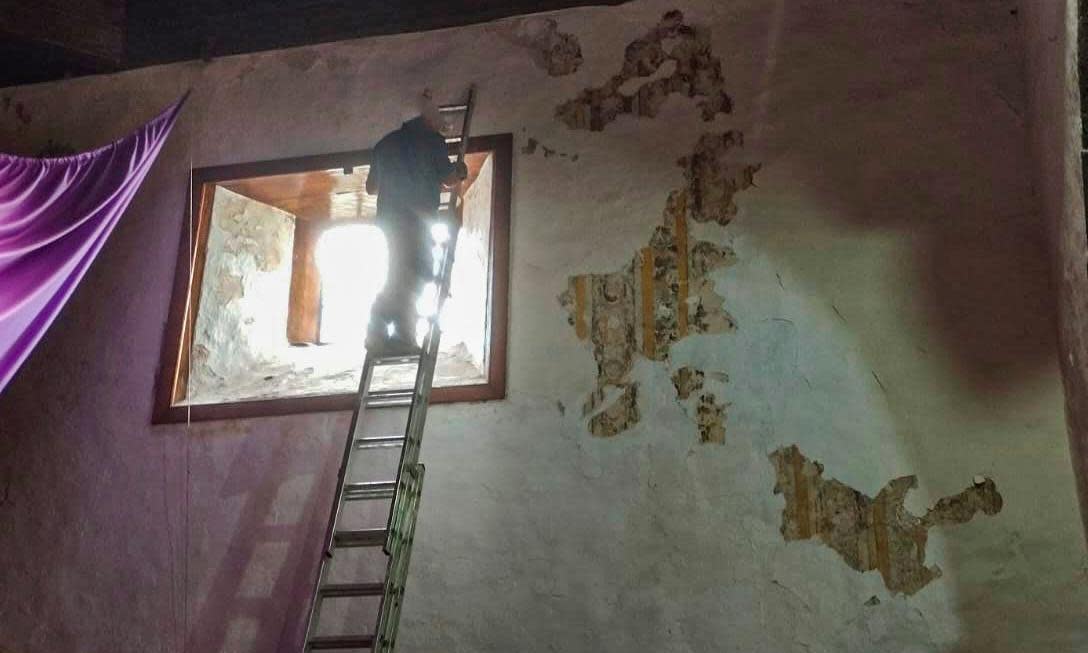Tenerife priest apologises for ordering 300-year-old frescoes to be painted over

A priest on the Spanish island of Tenerife has apologised after accidentally ordering a set of listed, 300-year-old frescoes in his parish church to be painted over as he attempted to ready the building for Holy Week.
The incident, at the church of St Anthony of Padua in the town of El Tanque, has prompted an outcry from local people, an investigation by the regional government of the Canary islands, and comparisons with other damaging amateur restorations in Spain.
The priest, Héctor Lunar, who was reported to have fled his native Venezuela after being threatened for criticising the regime of the country’s president, Nicolás Maduro, said he had not known the frescoes in his presbytery had been given protected status more than a decade ago.
The 16th-century church, which was rebuilt in the 18th century after burning to the ground during a volcanic eruption in 1706, was listed in 2011. The frescoes were discovered during restoration works two decades ago and covered with a protective but easily removable paint to conserve them.
“I’m sorry and I apologise to all the relevant authorities,” Lunar told the local El Día newspaper, adding he had had no idea what was on the walls he ordered to be stripped and repainted last week.
“No one told me about it. All I wanted to do was add another coat of paint to that bit of the church to get it ready for Holy Week events.”
He told the newspaper he had only just found the church’s heritage status meant he should have consulted the Canaries regional government before undertaking any works on the building.
“If they need to punish me, they should punish me,” he told the paper. “My mistake was not having informed myself about the riches of the church of St Anthony of Padua. I’d like to apologise to the authorities and the religious community of El Tanque. My intention wasn’t to cause any damage when I began efforts to improve the church. I’m very sorry.”
Local and regional heritage experts are examining the walls to see if the paintings can be saved.
The priest added: “We’re now in the hands of God and of those with the right knowledge.”
His apology was accepted by the local religious brotherhood that had denounced the works and called for him to be replaced as parish priest. But it said it simply couldn’t understand why he had not known about the frescoes or why he had failed to consult others before ordering in the decorators.
Esther Morales, the mayor of El Tanque, welcomed the priest’s apology and said she hoped the frescoes could be salvaged.
“We just hope that everything can get back to normal as soon as possible,” the mayor told El Día. “But we need to wait for the report from the regional government’s heritage department to see what the damage is. We hope it can be repaired.”
Local and national papers were quick to note the similarities with the so-called Monkey Christ restoration of 2012, when a faithful parishioner’s unfinished attempt to restore a fresco of the scourged Christ in the north-eastern Spanish town of Borja went viral, prompting endless memes and attracting tens of thousands of tourists.
Other high-profile botched Spanish restorations followed, including an overly restored statue of St George that was compared to Tintin or a Playmobil figure, and a trinity of late 15th-century wooden sculptures that were given a garish makeover by an amateur restorer.


